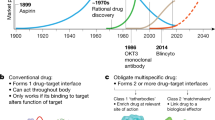Abstract
Therapeutic proteins, including enzymes, interferons, interleukins, and growth factors, are emerging as important modalities to treat many diseases that elude management by small molecule drugs. One challenge of protein treatment is the propensity for off-target or systemic activity. A promising approach to overcome such toxicity is to create conditionally active constructs by splitting the therapeutic protein into two, or more, inactive fragments and by fusing these fragments to binders (e.g., antibodies) that target distinct epitopes on a cell surface. When these antibodies bind to their respective targets, the protein fragments are brought into proximity and then reconstitute into the active form of the therapeutic protein. In this chapter, we describe approaches to determine antibody pairs that enable the reconstitution of the active protein. General computational and empirical methods are provided to facilitate the identification of pairs starting only from protein sequence data.
Access this chapter
Tax calculation will be finalised at checkout
Purchases are for personal use only
Similar content being viewed by others
References
Nervig CS, Hatch ST, Owen SC (2022) Complementation dependent enzyme prodrug therapy enables targeted activation of prodrug on HER2-positive cancer cells. ACS Med Chem Lett 13(11):1769–1775
Venetz D, Koovely D, Weder B, Neri D (2016) Targeted reconstitution of cytokine activity upon antigen binding using split cytokine antibody fusion proteins. J Biol Chem 291(35):18139–18147
Quijano-Rubio A, Bhuiyan AM, Yang H, Leung I, Bello E, Ali LR, Zhangxu K, Perkins J, Chun J-H, Wang W, Lajoie MJ, Ravichandran R, Kuo Y-H, Dougan SK, Riddell SR, Spangler JB, Dougan M, Silva D-A, Baker D (2022) A split, conditionally active mimetic of IL-2 reduces the toxicity of systemic cytokine therapy. Nat Biotechnol
Simeon R, Chen Z (2018) In vitro-engineered non-antibody protein therapeutics. Protein Cell 9(1):3–14
Jost C, Plückthun A (2014) Engineered proteins with desired specificity: DARPins, other alternative scaffolds and bispecific IgGs. Curr Opin Struct Biol 27:102–112
Weidle UH, Auer J, Brinkmann U, Georges GUY, Tiefenthaler G (2013) The emerging role of new protein scaffold-based agents for treatment of cancer. Cancer Genomics Proteomics 10(4):155
Jumper J, Evans R, Pritzel A, Green T, Figurnov M, Ronneberger O, Tunyasuvunakool K, Bates R, Zidek A, Potapenko A, Bridgland A, Meyer C, Kohl SAA, Ballard AJ, Cowie A, Romera-Paredes B, Nikolov S, Jain R, Adler J, Back T, Petersen S, Reiman D, Clancy E, Zielinski M, Steinegger M, Pacholska M, Berghammer T, Bodenstein S, Silver D, Vinyals O, Senior AW, Kavukcuoglu K, Kohli P, Hassabis D (2021) Highly accurate protein structure prediction with AlphaFold. Nature 596(7873):583–589
Mirdita M, Schutze K, Moriwaki Y, Heo L, Ovchinnikov S, Steinegger M (2022) ColabFold: making protein folding accessible to all. Nat Methods 19(6):679–682
Yin R, Feng BY, Varshney A, Pierce BG (2022) Benchmarking AlphaFold for protein complex modeling reveals accuracy determinants. Protein Sci 31(8):e4379
Bender BJ, Cisneros A III, Duran AM, Finn JA, Fu D, Lokits AD, Mueller BK, Sangha AK, Sauer MF, Sevy AM, Sliwoski G, Sheehan JH, DiMaio F, Meiler J, Moretti R (2016) Protocols for molecular modeling with Rosetta3 and RosettaScripts. Biochemistry (Mosc) 55(34):4748–4763
Schoeder CT, Schmitz S, Adolf-Bryfogle J, Sevy AM, Finn JA, Sauer MF, Bozhanova NG, Mueller BK, Sangha AK, Bonet J, Sheehan JH, Kuenze G, Marlow B, Smith ST, Woods H, Bender BJ, Martina CE, Del Alamo D, Kodali P, Gulsevin A, Schief WR, Correia BE, Crowe JE Jr, Meiler J, Moretti R (2021) Modeling immunity with Rosetta: methods for antibody and antigen design. Biochemistry (Mosc) 60(11):825–846
Song Y, DiMaio F, Wang RY-R, Kim D, Miles C, Brunette T, Thompson J, Baker D (2013) High-resolution comparative modeling with RosettaCM. Structure 21(10):1735–1742
Raman S, Vernon R, Thompson J, Tyka M, Sadreyev R, Pei J, Kim D, Kellogg E, DiMaio F, Lange O (2009) Structure prediction for CASP8 with all-atom refinement using Rosetta. Proteins Structure Function Bioinformatics 77(S9):89–99
Pierce BG, Wiehe K, Hwang H, Kim BH, Vreven T, Weng Z (2014) ZDOCK server: interactive docking prediction of protein-protein complexes and symmetric multimers. Bioinformatics 30(12):1771–1773
Pettersen EF, Goddard TD, Huang CC, Meng EC, Couch GS, Croll TI, Morris JH, Ferrin TE (2021) UCSF ChimeraX: structure visualization for researchers, educators, and developers. Protein Sci 30(1):70–82
Guest JD, Vreven T, Zhou J, Moal I, Jeliazkov JR, Gray JJ, Weng Z, Pierce BG (2021) An expanded benchmark for antibody-antigen docking and affinity prediction reveals insights into antibody recognition determinants. Structure 29(6):606–621.e5
Marze NA, Roy Burman SS, Sheffler W, Gray JJ (2018) Efficient flexible backbone protein–protein docking for challenging targets. Bioinformatics 34(20):3461–3469
van Rosmalen M, Krom M, Merkx M (2017) Tuning the flexibility of glycine-serine linkers to allow rational design of multidomain proteins. Biochemistry (Mosc) 56(50):6565–6574
Kim SJ, Dixon AS, Owen SC (2021) Split-enzyme immunoassay to monitor EGFR-HER2 heterodimerization on cell surfaces. Acta Biomater 135:225–233
Dixon AS, Kim SJ, Baumgartner BK, Krippner S, Owen SC (2017) A tri-part protein complementation system using antibody-small peptide fusions enables homogeneous immunoassays. Sci Rep 7(1):8186
Kincaid VA, Wang H, Sondgeroth CA, Torio EA, Ressler VT, Fitzgerald C, Hall MP, Hurst R, Wood MG, Gilden JK, Kirkland TA, Lazar D, Chia-Chang H, Encell LP, Machleidt T, Zhou W, Dart ML (2022) Simple, rapid chemical labeling and screening of antibodies with luminescent peptides. ACS Chem Biol 17(8):2179–2187
Kim SJ, Hatch ST, Dixon AS, Owen SC (2019) Split-enzyme fragment as a single affinity tag that enables protein expression, purification, and functional assays. Biotechnol Bioeng 116(7):1575–1583
Author information
Authors and Affiliations
Corresponding author
Editor information
Editors and Affiliations
Rights and permissions
Copyright information
© 2024 The Author(s), under exclusive license to Springer Science+Business Media, LLC, part of Springer Nature
About this protocol
Cite this protocol
Nervig, C.S., Gustat, J.R., Owen, S.C. (2024). Split-Protein Therapeutic Platforms: Identifying Binder Pairs. In: Sullivan, M.O., Chackerian, B., Chen, W. (eds) Therapeutic Proteins. Methods in Molecular Biology, vol 2720. Humana, New York, NY. https://doi.org/10.1007/978-1-0716-3469-1_5
Download citation
DOI: https://doi.org/10.1007/978-1-0716-3469-1_5
Published:
Publisher Name: Humana, New York, NY
Print ISBN: 978-1-0716-3468-4
Online ISBN: 978-1-0716-3469-1
eBook Packages: Springer Protocols



